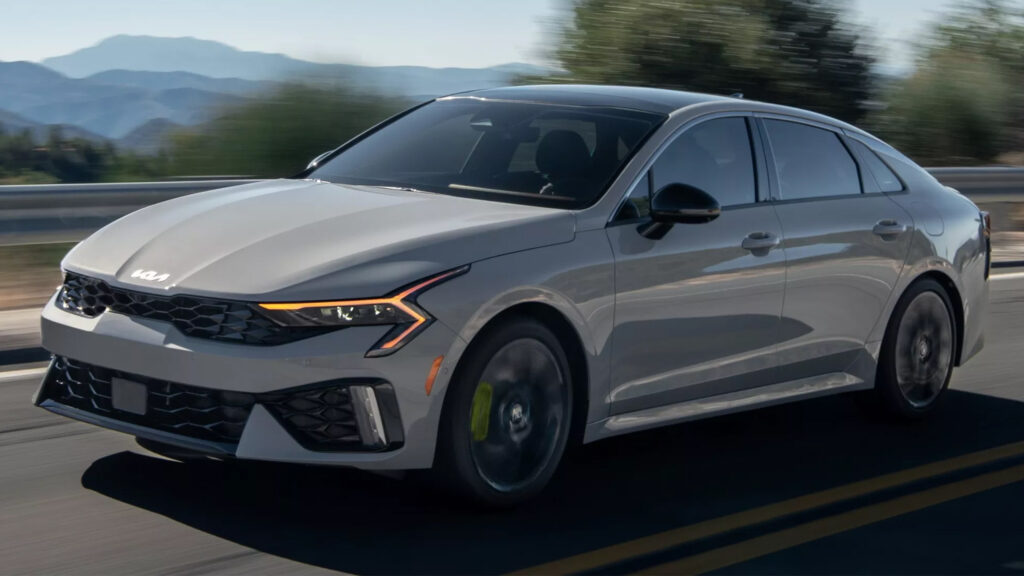
- Kia plans to cut incentives, saving up to $435 million over the next 12 months..
- US.-built models will be prioritized while Korean exports shift to other markets.
- The company aims to grow U.S. market share from 5.1 percent to over 6 percent.
Global auto brands are adjusting their strategies in response to shifting trade policies, and few markets have felt the ripple effects as sharply as the United States. Among those recalibrating is Kia, which is adjusting its operations to blunt the effects of tariffs introduced during the Trump administration.
var adpushup = window.adpushup = window.adpushup || {que:[]};
adpushup.que.push(function() {
if (adpushup.config.platform !== “DESKTOP”){
adpushup.triggerAd(“0f7e3106-c4d6-4db4-8135-c508879a76f8”);
} else {
adpushup.triggerAd(“82503191-e1d1-435a-874f-9c78a2a54a2f”);
}
});
The company is reducing imports from South Korea to the US while placing greater focus on models built domestically.
Read: Kia’s Family Hauler Dodges Tariff Tax, For Now
Late last week, Kia confirmed that the models produced at its plant in Georgia will primarily be directed to customers in the United States, meaning it’ll export fewer of them to international markets. Meanwhile, Korean-made vehicles will be directed away from the US and to other countries, including Canada.
Incentive Cuts Replace MSRP Increases
Alongside changes to its supply routes, Kia is also fine-tuning its pricing strategy, and the effects may still be felt by buyers. While the company says it doesn’t plan to raise sticker prices in the US in the near term, it is taking a different route that could still increase costs for consumers.
Rather than adjusting MSRP directly, Kia will cut back on customer incentives, reports Bloomberg. This includes reductions in discounts and promotional financing, a change that will effectively raise what shoppers pay out of pocket. By scaling back discounts and financing offers, Kia stands to save as much as 600 billion won, or about $435 million, over the next year. For consumers, though, the bottom line might feel very similar to a price hike.
According to Bloomberg, Kia is bracing for a more difficult second half of the year. Kia’s chief financial officer, Kim Seung-jun, pointed to growing competition in markets such as Europe, as well as the end of federal EV tax credits in the US, as key headwinds. The first half of the year has already proved challenging, with the company recently reporting a 24 percent decline in operating profit for the three months ended June 30.

Growth Goals in a Tough Market
var adpushup = window.adpushup = window.adpushup || {que:[]};
adpushup.que.push(function() {
if (adpushup.config.platform !== “DESKTOP”){
adpushup.triggerAd(“bb7964e9-07de-4b06-a83e-ead35079d53c”);
} else {
adpushup.triggerAd(“9b1169d9-7a89-4971-a77f-1397f7588751”);
}
});
Despite casting a somewhat pessimistic view about the business environment for the latter part of 2025, Kia has ambitions to grow its US market share before the end of the year. The company hopes to increase local sales by 7-8 percent in the second half, aiming to boost its market share from 5.1 percent to over 6 percent. Models like the K4 and Carnival are expected to play a significant role in driving that growth, according to Reuters.
“We believe that we will be able to use the difficult environment as a good opportunity to level up our market share and sales, and that’s Kia’s strength,” said Seung-jun.
var adpushup = window.adpushup = window.adpushup || {que:[]};
adpushup.que.push(function() {
if (adpushup.config.platform !== “DESKTOP”){
adpushup.triggerAd(“bb7964e9-07de-4b06-a83e-ead35079d53c”);
} else {
adpushup.triggerAd(“9b1169d9-7a89-4971-a77f-1397f7588751”);
}
});


